Hospitalization in World War II – Mobile and Fixed Hospitals
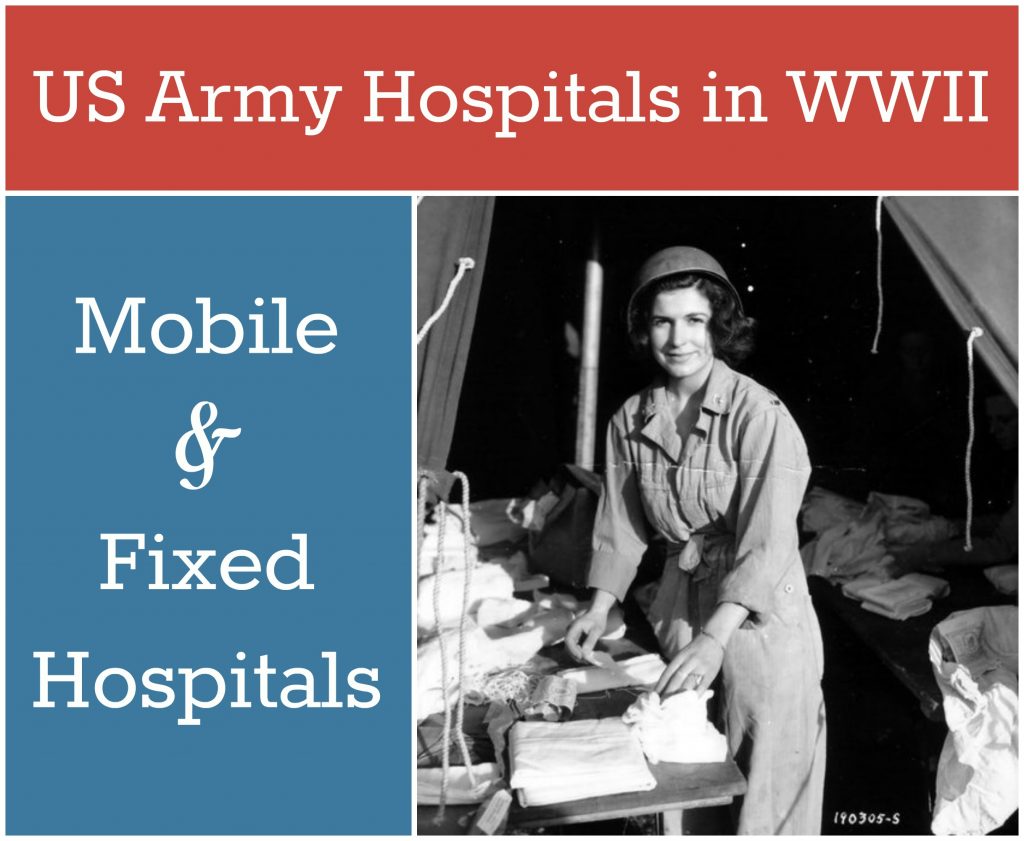
Photo: US Army nurse preparing dressings, 15 June 1944, 13th Field Hospital, St.-Laurent-sur-Mer, Normandy (US National Archives)
Hutch crossed his arms over his soggy mackinaw and gave Bergie half a smile. “You said you’d take over. Ever pitch a tent before?”
“In Boy Scouts.” The surgeon raised a three-finger salute. “On my honor–“
“A big old Army ward tent?”
“Nope. But I’m willing to get dirty. What’s mud compared to the blood and guts I usually swim in?”
Hutch turned to Sergeant Paskun. “I’ll put the captain on my team and mess up his pretty officer’s manicure.”
“Heavens to Betsy!” Bergie said in a falsetto, inspecting his fingernails. “I just had them done.” (On Distant Shores, p. 150)
In my novel On Distant Shores, the hero serves as a pharmacist in an evacuation hospital and the heroine serves as a flight nurse. This article is the second in a three-part series on US Army hospitalization in World War II.
Part 1: chain of evacuation
Part 2: mobile and fixed hospitals
Part 3: evacuation of the wounded
Mobile Hospitals
Field hospitals (400 beds) and evacuation hospitals (400 or 750 beds) arrived within a few days of an invasion and followed the army, staying about thirty miles behind the front. They were close enough to treat patients quickly and send them back to the front quickly as well.
These hospitals relied on mobility. They usually used canvas tents, but also used schools, barracks, hospital buildings, hotels, Mediterranean villas, and even an Italian stadium. A few days before a move, the hospital stopped admitting patients and evacuated their current patients to other hospitals. They packed their equipment and personnel into trucks, advanced to the next location, set up, and were ready to admit patients within hours.
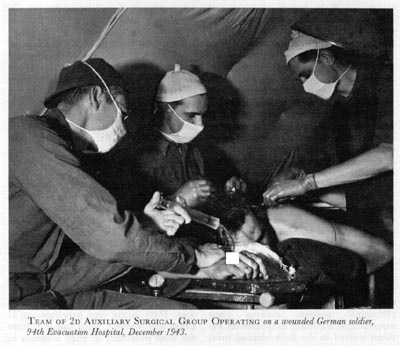
Surgeons at 94th Evacuation Hospital, Italy, December 1943 (US Army Medical Dept.)
When ambulances arrived, triage officers sent patients to pre-op, medical, shock, or evacuation wards as needed. Surgical teams worked twelve hours on, then twelve hours off.
In the European Theater (England, France, Belgium, Germany), the field hospitals stayed closer to the front, with the evacuation hospitals farther to the rear. In the Mediterranean Theater (North Africa, Sicily, Italy, southern France), field hospitals and evacuation hospitals were used interchangeably. Both theaters practiced “leapfrogging” as the front advanced—hospital A would pass hospital B, then hospital B would pass hospital A. This reduced the frequency of moves
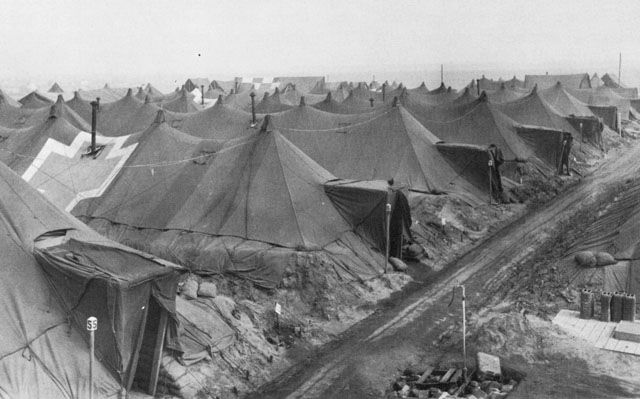
US evacuation hospital tents on the Anzio beachhead, Italy, spring 1944, revetted for protection from bombs and shells (US Army Medical Dept.)
Fixed Hospitals
The station hospitals (250, 500, or 750 beds), general hospitals (1000 beds), and convalescent hospitals (2000 or 3000 beds) were set up far from the front to keep patients safe from danger, but also to keep them in the theater, which made it easier to return the soldiers to duty. In England before D-day, field and evacuation hospitals waiting for the Normandy invasion functioned as station hospitals to care for patients.
In each theater of operations, fixed hospitals operated in what was called the “Communications Zone.” In the European Theater, the COMZ was originally in England, then as the Allies approached the German border, the COMZ extended to include Normandy and Belgium. In the Mediterranean Theater, Morocco served as the first COMZ, then Algeria. When the Allies invaded Sicily and Italy, North Africa was the COMZ, and as the front advanced, the COMZ was established in the Naples area of southern Italy. In the Pacific, fixed hospitals were first established in Hawaii and Australia, then followed into secured regions.
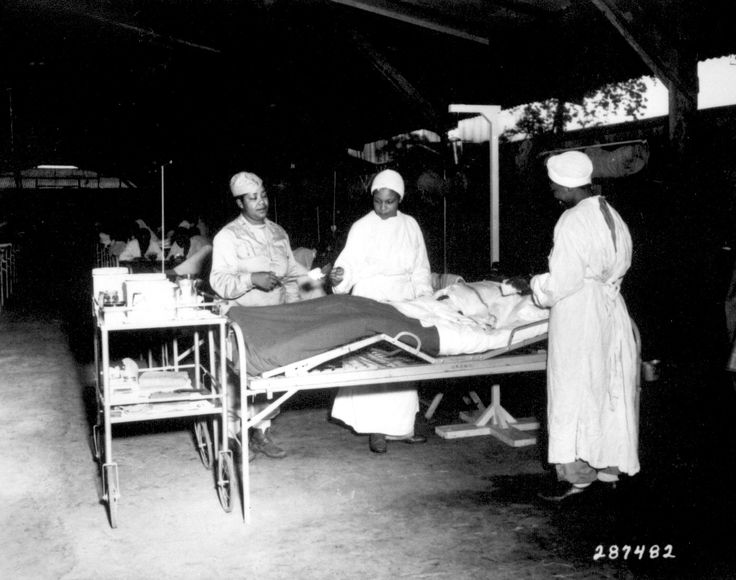
African-American US Army nurses Lt Prudence Burns, Lt Elcena Townscent, and a 3rd nurse treating Sgt Lawrence McKreever 268th Station Hospital, Milne Bay, New Guinea, 22 Jun 1944 (US National Archives)
Fixed hospitals moved less often and occupied more permanent facilities. American units used some standing hospitals in host or occupied countries, but many were a collection of tents or Nissen huts, 20-ft by 40-ft corrugated tin semi-cylinders. In England, Nissen-hut hospital complexes were often placed on estate grounds, and had concrete floors, flush toilets, clean water, and were heated by coal-burning stoves. In the Mediterranean and Pacific, facilities were more primitive but improved over time. In these theaters, mosquito netting was draped over the beds to prevent transmission of malaria.
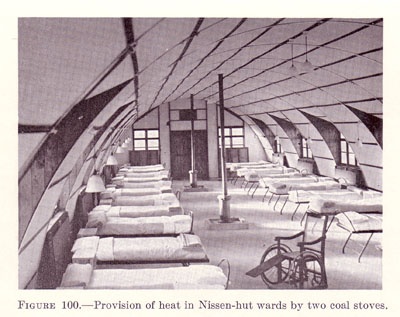
Nissen-hut hospital in England. Note coal stoves in center (US Army Medical Dept.)
Fixed hospitals in the Zone of the Interior (continental United States) enjoyed the benefits of modern buildings and facilities. However, shortages of medication, equipment, and personnel were always a problem.
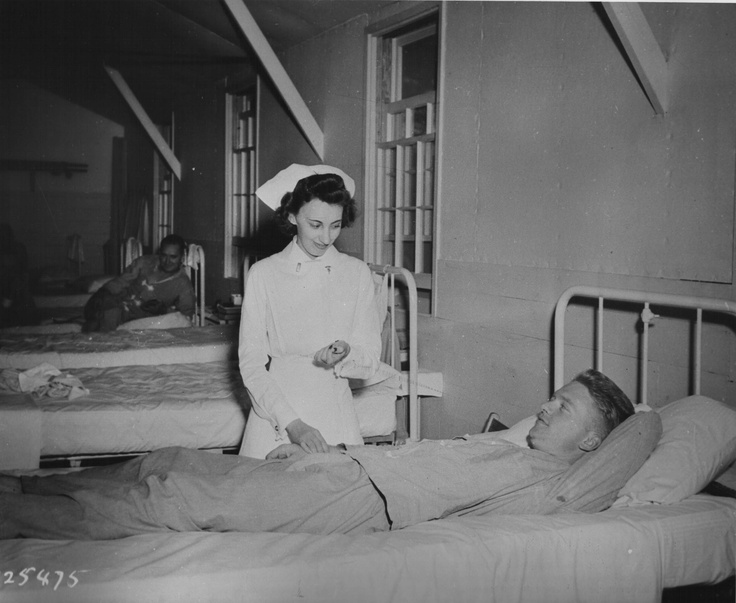
Army nurse attending patient, Camp Forrest, Tullahoma, TN, 22 Sept. 1941 (US Army Medical Dept.)
Resources
Cosmas, Graham A. & Cowdrey, Albert E. The Medical Department: Medical Service in the European Theater of Operations. Washington, D.C.: United States Army Center of Medical History, 1992.
Wiltse, Charles M. The Medical Department: Medical Services in the Mediterranean and Minor Theaters. Washington, DC: Office of the Chief of Military History, Department of the Army, 1965.
Condon-Rall, MaryEllen & Cowdrey, Albert E. The Medical Department: Medical Service in the War Against Japan. Washington, D.C.: United States Army Center of Medical History, 1998.
Links, Mae Mills & Coleman, Hubert A. Medical Support of the Army Air Forces in World War II. Washington, D.C.: Office of the Surgeon General, USAF, 1955.
Smith, Clarence McKittrick. The Medical Department: Hospitalization and Evacuation, Zone of the Interior. Washington, DC: Center of Military History, United States Army, 1989.


Fine job!!!